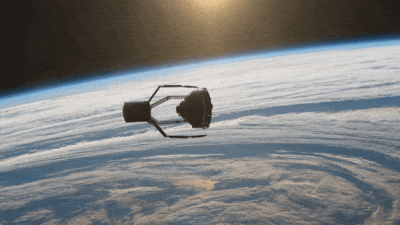 At the beginning of my teenage years in Canada, I remember my mother talking in hushed tones about Aunt Hana, who suddenly and mysteriously starting feeling strange aches and pains in her body. Doctors couldn’t find a systemic cause for her ailments, until she traced back dates to when she was last in Poland visiting her mother.
At the beginning of my teenage years in Canada, I remember my mother talking in hushed tones about Aunt Hana, who suddenly and mysteriously starting feeling strange aches and pains in her body. Doctors couldn’t find a systemic cause for her ailments, until she traced back dates to when she was last in Poland visiting her mother.
It was confirmed. She was there during the Chernobyl nuclear explosion.
Poland was not immune to the effects of the Chernobyl nuclear disaster that spat radioactive dust across the northern hemisphere landing as far as Ireland, Scandinavia and Israel.
For years after the blast originating in the Ukraine, Westerners were told not to consume wine and foodstuffs from the Ukraine, Belarus and Russia – for fear of subjecting oneself to untold amounts of nuclear radiation.
Was my Aunt Hana affected by the nuclear blast? Who knows. At least she had Canada to house her, I thought to myself while wondering about the people who still lived in the areas around and about the Ukraine, some estimated 5 to 8 million people who today carry the legacy of Chernobyl in their hearts, minds, tissues and bones.
GreenPeace, an international environmental advocacy group best known for its’ ‘save the whales’ campaigns, this year made a special commemoration of the Chernobyl explosion of April 1986 in the hopes of preventing such another disaster from happening again.
Showcased in Israel, GreenPeace held a special photo exhibit and movie screening on some of the untold life-stories left in the aftermath of Chernobyl.
The exhibition was launched in the presence of the First Secretary of the Ukrainian Embassy in Israel and included the movie ‘Chernobyl Heart’ which documented the disaster on the children of Chernobyl. The movie was followed by a panel discussion involving Chernobyl survivors and Greenpeace nuclear campaigners.
GreenPeace had commissioned Dutch photographer Robert Knoth to take 80 portraits of nuclear survivors suffering the long-term consequences of radiation.
Rethinking the use of nuclear energy is particularly important now, he notes, especially when developing countries such as India are eager to begin taking advantage of what seems like an endless supply of energy that nuclear technology can produce.
Furthermore, using nuclear technology for energy only leads to nuclear proliferation, explains Gideon, and the world should be particularly concerned on that front with regards to what is happening right now in North Korea and Iran.
Gideon explains, “No industry is without its mistakes. Things go wrong sometimes. Just look at the rockets designed by NASA. Even they explode sometimes. Nobody can give us a guarantee.”
That is why people should remember what happened at Chernobyl and be more cautious and fearful to jump to nuclear technology instead of pursuing alternative energy such as solar, biomass or wind power.
Also unspent nuclear fuel never goes away and is left for generations upon generations to deal with its harmful radioactivity.
GreenPeace plans to continue campaigning against the dangers of nuclear technology and through a report released this year, attempt to show the world some of the misconstrued facts surrounding the Chernobyl explosion.
“We released an international report this year which talks about how the organizations involved in Chernobyl were distorting facts,” says Gideon. “Even the World Health Organization (WHO) claimed that only several hundred people were killed by Chernobyl. The numbers our scientists found were closer to 40,000 people. This is a big gap,” adds Gideon.
One could say, for those from the Chernobyl area that life has gone on. Millions continue to live in the region, and those who have had the ability, have made other countries their homes – like the 100,000 Ukrainians who have moved to Israel since 1986. Israel is home to the fourth largest number of Chernobyl survivors, says GreenPeace.
But these immigrants from the Ukraine, who have moved to new countries in Europe, America or in the Middle East can’t wash away the memories and radiation exposure they have suffered through.
And who knows how many thousands or millions more were affected by Chernobyl – even you and me – and don’t know it?
“The radioactive cloud from Chernobyl spread over large parts of Europe and Asia, and even reached North America and Africa,” says Gideon. “And unconfirmed reports indicate that radiation reached Israel. Nuclear energy is a threat to everyone as it is not possible to have 100% secure or safe nuclear technology.”
Radiation exposure causes cancer, reproductive damage, mutations in children and shaves years off the lifespan of people. It also lingers in the precious food chain of nature – in the bodies of animals, in the blades of grass that they eat and the food we eventually take into our homes.
After many years with a lull in nuclear technology, it is good to know groups such as GreenPeace are working to show the world once again excited by “going nuclear” that dangers loom ahead in this direction.
Back at the time when women were burning bras and screaming ‘Ban the Bomb,’ Greenpeace had already started working on nuclear issues. Its first action against nuclear testing was off the coast of Alaska in the early 70s. Since then Greenpeace has been campaigning on nuclear energy and disarmament issues all around the world.
Remembering Chernobyl is important, says GreenPeace’s Gideon, “because the survivors are still there and here. It is not like something that happened in the past. Children are still growing up feeling the effects of the radiation. It’s awful.”
Chernobyl was an event to reaffirm why nuclear energy is not a solution but an expensive diversion, says GreenPeace. “We can address climate change more cleanly, cheaply and peacefully using renewable energy and energy efficiency measures. With today’s technology we can generate almost six times the current global energy demand through renewable energy like wind and solar.”
GreenPeace and our future generations are looking to us to make the responsible choice in securing energy needs of the future. If we make the right steps, we can prevent another Chernobyl from ever happening again.




This is a very good piece and the personal account at the start made it compelling. The picture was arresting too – I thought it was a family picture but I see it’s Greenpeace’s, presumably Robert Knoth, from the current exhibition (might be worth making that clear).
Not quite sure what point the “women burning bras and screaming: Ban the Bomb”” was making. Do tell! Women did not burn their bras – this was a media-concocted story. It was used to dismiss valid feminist protests. And still is, 40 years later. Enough!
Ban the bomb was/is a campaign slogan for CND (the campaign for nuclear disarmament).